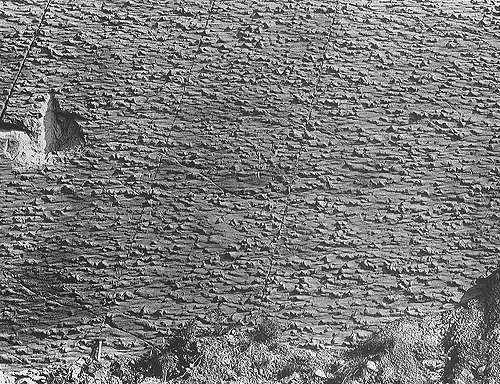
Fluid-made marks: flute casts
Plate 88

Fluid-made marks: flute casts
Plate 88
The base of a verticalized turbidite bed is shown here (see the commentary for plate 9). It is completely covered by flute casts, from which the paleocurrent can be easily defined (try yourselves, on the base of what has been explained in plate 87) and measured. A hammer is placed for scale in the lower left side.
Marnoso-arenacea Formation, northern Apennines.
Flute casts are the most "popular" and widespread markings in turbiditic sandstones, where they represent the most reliable indicators of paleocurrent. It would be wrong, however, to consider them as indicators of turbiditic or deep-water sedimentation. A turbulent suspension flowing on a muddy bottom is all you need to form flute marks. Such a current can occur in shallow water by means of tidal or storm input, and also in the alluvial environment; flutes have been found in lagoonal sediments, for example, and even in bedrock clays of some stream beds and banks (see plate 148).